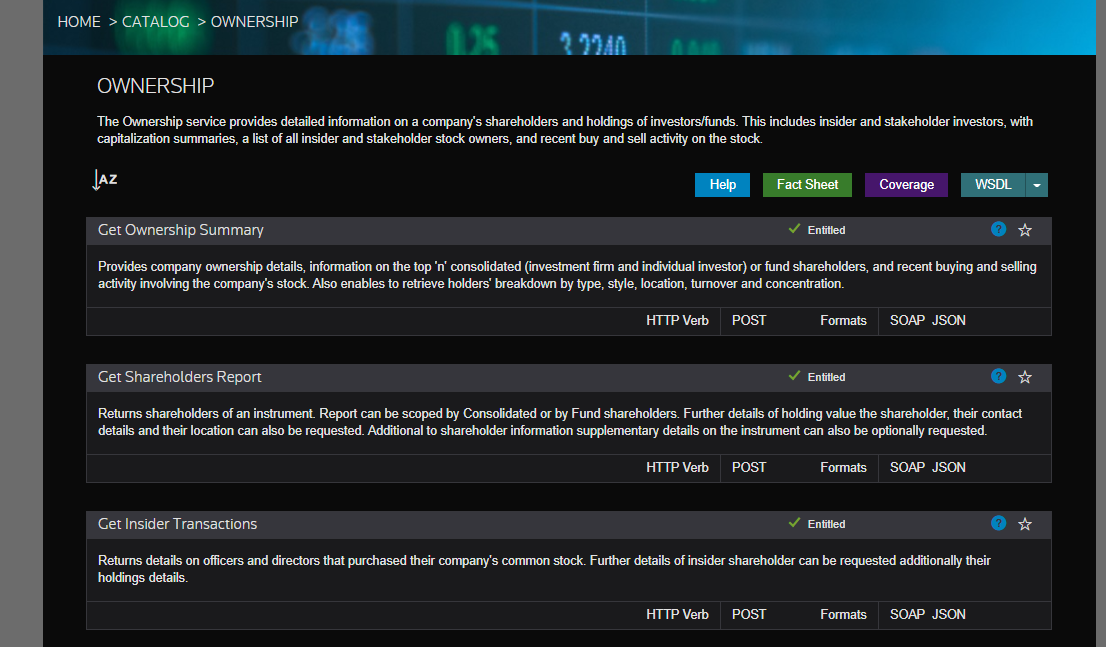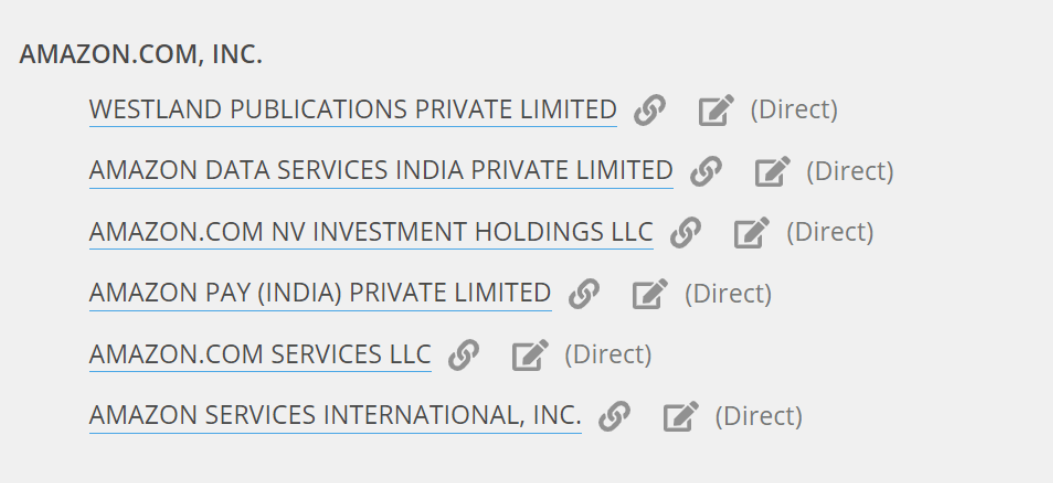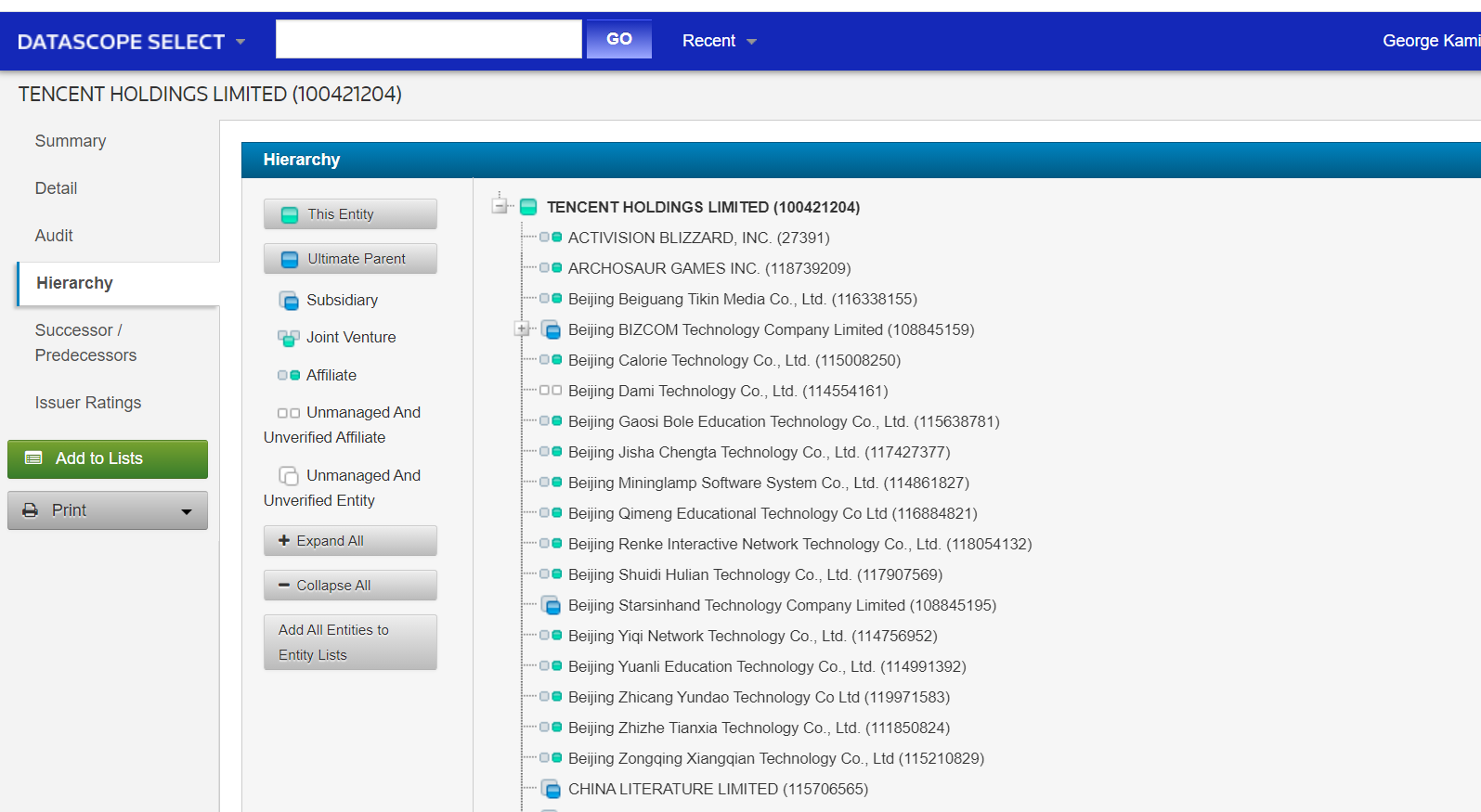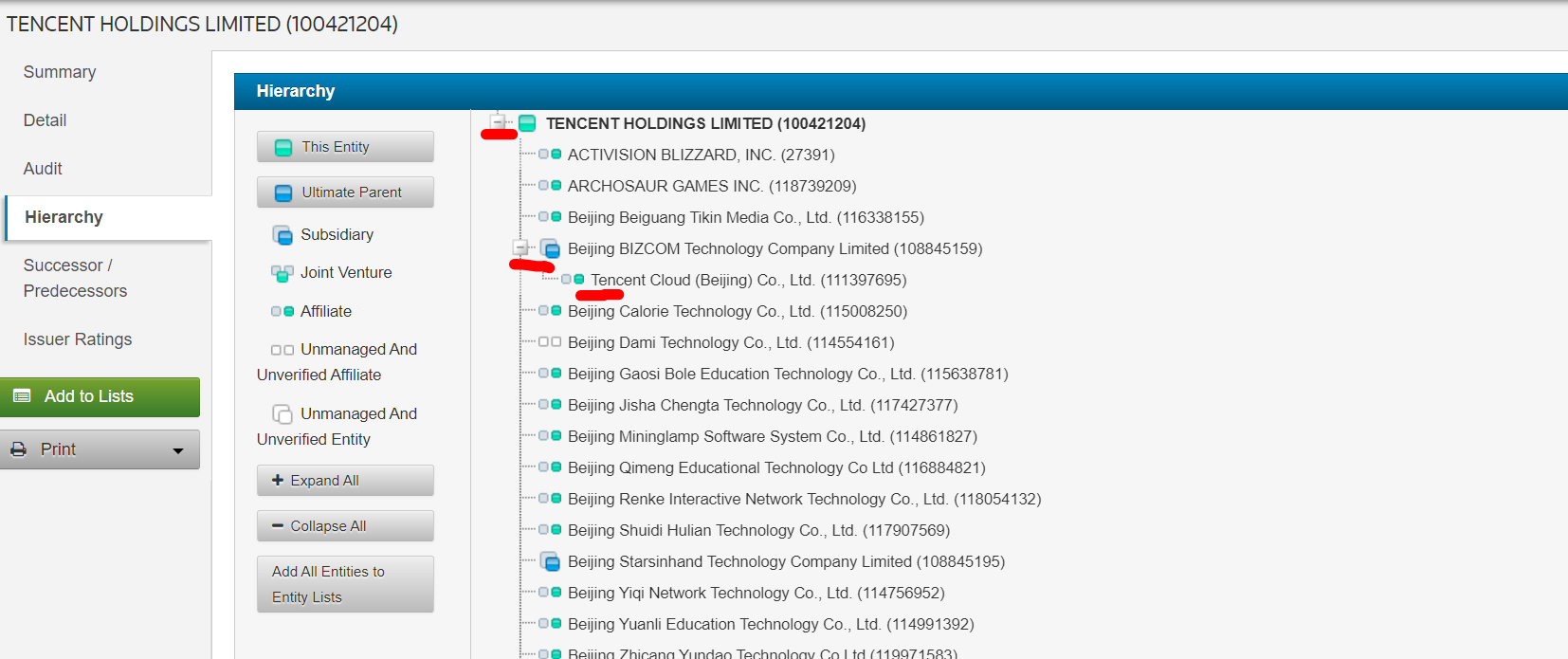I tried integrating RKD financial and general info APIs using python. Now working on integrating company hierarchy data(subsidary and ultimate parents info) for a given company (ric_code).
I am not able to figure out the exact API and how to call the API. Please help in proceeding further and get this data.
To summarize : I want to get the company ownership hierarchy data(subsidaries and ultimate parent) for a given company(ric_code) using DataScope API and python.
How I am calling GetFinancialStatementsReports_1 API:
message_headers = {
'content-type': 'application/json;charset=utf-8',
'X-Trkd-Auth-ApplicationID': app_id,
'X-Trkd-Auth-Token': auth_token
}
message_request = {
'GetFinancialStatementsReports_Request_1': {
'companyId': IBM.N,
'companyIdType': 'RIC'
}
}
api_url = 'https://api.rkd.refinitiv.com/api/Fundamentals/Fundamentals.svc/REST/Fundamentals_1/GetFinancialStatementsReports_1'
import request api_response = requests.post(api_url, data=json.dumps(message_request), headers=message_headers)








